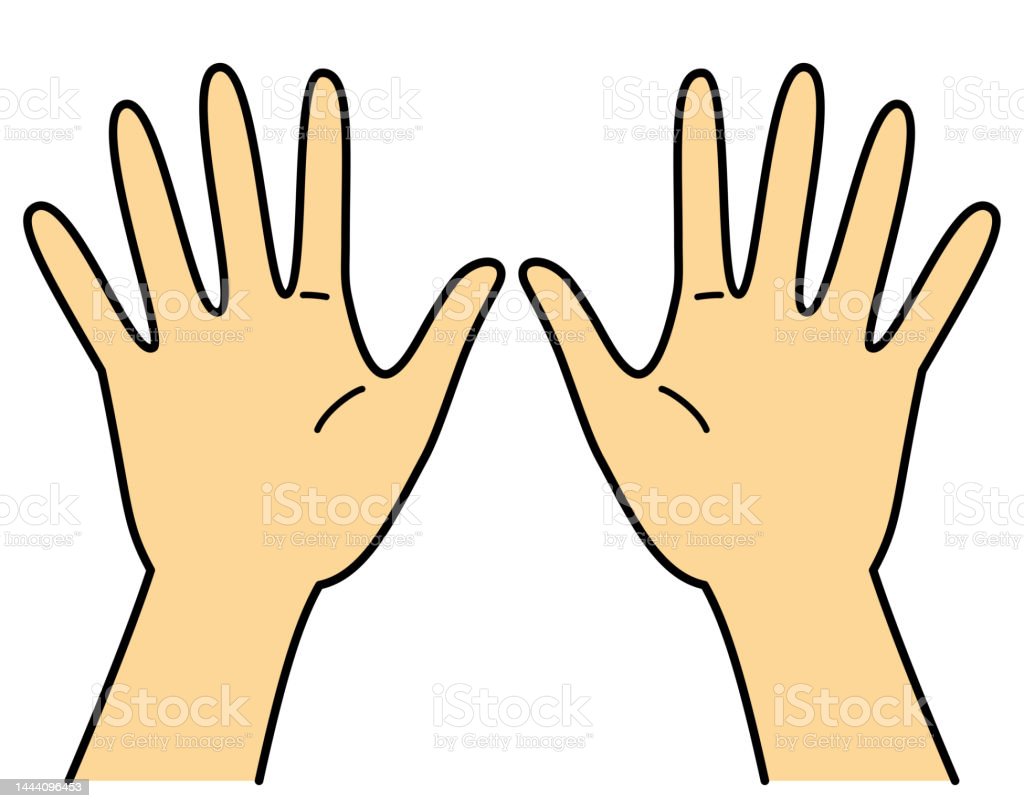Different base numbers have different types of counting.
Normal type of counting, base 10 numbers
This is a usual type of counting that used by everyone, also called Decimal Number System. Base 10 numbers can be represented by our hands
The example of number "seven" in base 10 is shown below:
Or, it could be written as:
The "7" number is used for counting, but "10" number is indication that 7 is base 10 number. The full counting of base 10 is:
Table above shows that number of objects compared to base 10 numbers. You may ask, where is 10? 10 is actually exists in base 10 numbers even the numbers after 10, it depends on the number of objects you want to count. Thus, 10 is after 9, 11 is after 10 and so on.
Base 2 numbers, computer numbers
This
number is usually used by the computers and logic gates in the microchips, and another name for "base 2" is "binary number". The
digits is only two: 0 and 1. Wait, how to count from 1 to 10, you may ask. Just repeat the 0s and 1s to complete the counting. The table below shows how to count:
Then, the number ten in binary would be:
"1010" is base 2 number for 10 in usual number (base 10). The "2" subscript means "1010" is base 2 number.
Base 8
The base 8 seems to have digits less than 10, but it is also can be used for counting. Base 8 is also called "octal numbers". The base 8 numbers would be used if octopus can somehow counts.
For base 8 numbers, look at the table below:
What about ten? The notation of ten in base 8 number is 12.
Base 16 numbers
The base 16 numbers, also called hexadecimal numbers. The hexadecimal numbers have multiple uses in technological spectrum, such as HTML colour codes, MAC address (your PC has this) and memory address inside memory of computer. Below is how to count using base 16:
Honourable mention
One of the base numbers that can be mention is base 3 numbers. This number system is also called "ternary numbers". This type of counting is possible when you use lines on fingers or phalanx on fingers (one finger has three segments).
The counting of base 3 numbers will be like the table below:
Base 10 to base 2 and vice versa
To change from base 10 (normal number) to base 2, you can do the following (eg. base 10 number is 45):Thus, the base 2 number for 45 is 101101. The process consists of division, with remainder put beside the number below. 45 divided by 2 is 22, remainder 1. This 1 is least significant, so it is the back of base 2 number. Next, 22 divided by 2 is 11, with 0 remainder. So 0 would be placed in tens unit (would be 01 of base 2). The division process goes on until 1 had divided by 2, causing remainder 1.
Next, how to turn base 2 number: 101101, to base 10:
Base 10 to base 8 and vice versa
Below is how to change base 10 number to base 8:
The base 10 number is 46. When undergone division, 46 divided by 8 equal 5, and the remainder (6) is put beside 5. Then 5 divided by 8, but remainder is still 5. Thus, 5 is carry to below 5 with 8. Then, 5 is most significant because it is below, and 6 is least significant because it is in upper position. So, the base 8 is 56.
Next, lets we look on how to change base 8 number to base 10:
The 5 is most significant and at unit tens of base 8, so 5 is multiplied by 8 power of 1. Next, 6 is least significant, thus 6 is multiplied by 8 power of 0 (equals 1). After each base number is multiplied by respective units, add them together. So, base 10 number of 56 is 46.
Base 16 to base 10 and vice versa
How to change from base 10 number to base 16? Look below:
Base 10 number is 47. When 47 is divided by 16, it is equal 2 and the remainder is 15. So, 15 is put beside 2 and 15 when using base 16 notation, 15 equals to F. Then, 2 is smaller than 16, so 2 is written below 2 that with 15. 2 is most significant because it is at the bottom and F is less significant because it is higher than 2. So, hexadecimal number is 2F.
Lets look on how to change base 16 number to base 10 number:
The base 16 number is 2F. To turn to base 10, we should know which is most significant and which is least significant. 2 is most significant and positioned in tens unit, thus 2 is multiplied by 16 power of 1. Then, F is least significant and positioned in a unit (not tens, not hundreds), thus F (F is 15) is multiplied by 16 power of 0. After multiply all of them, add all of them together. So, the base 10 number is 47.
Feel free to comment any ideas. Thank you!





















